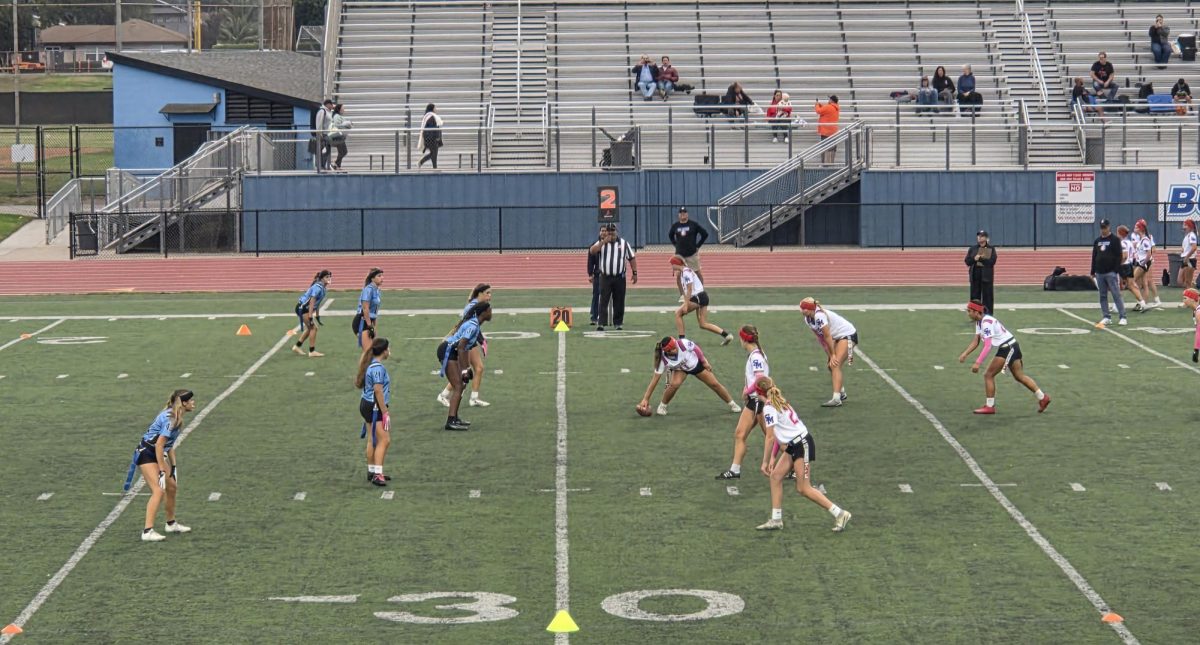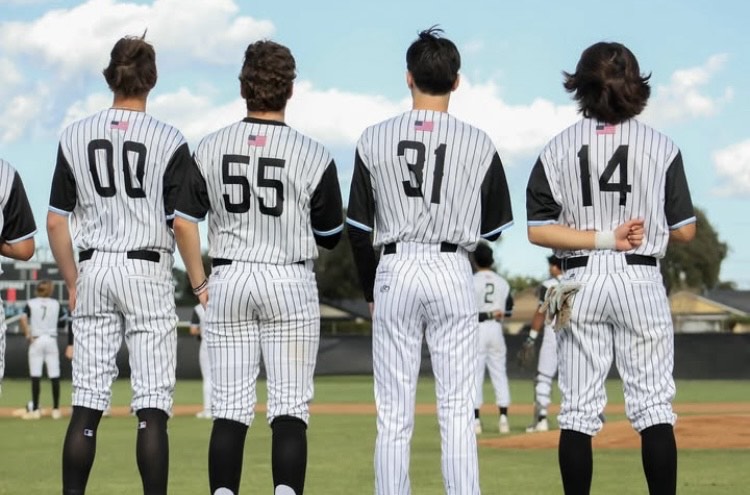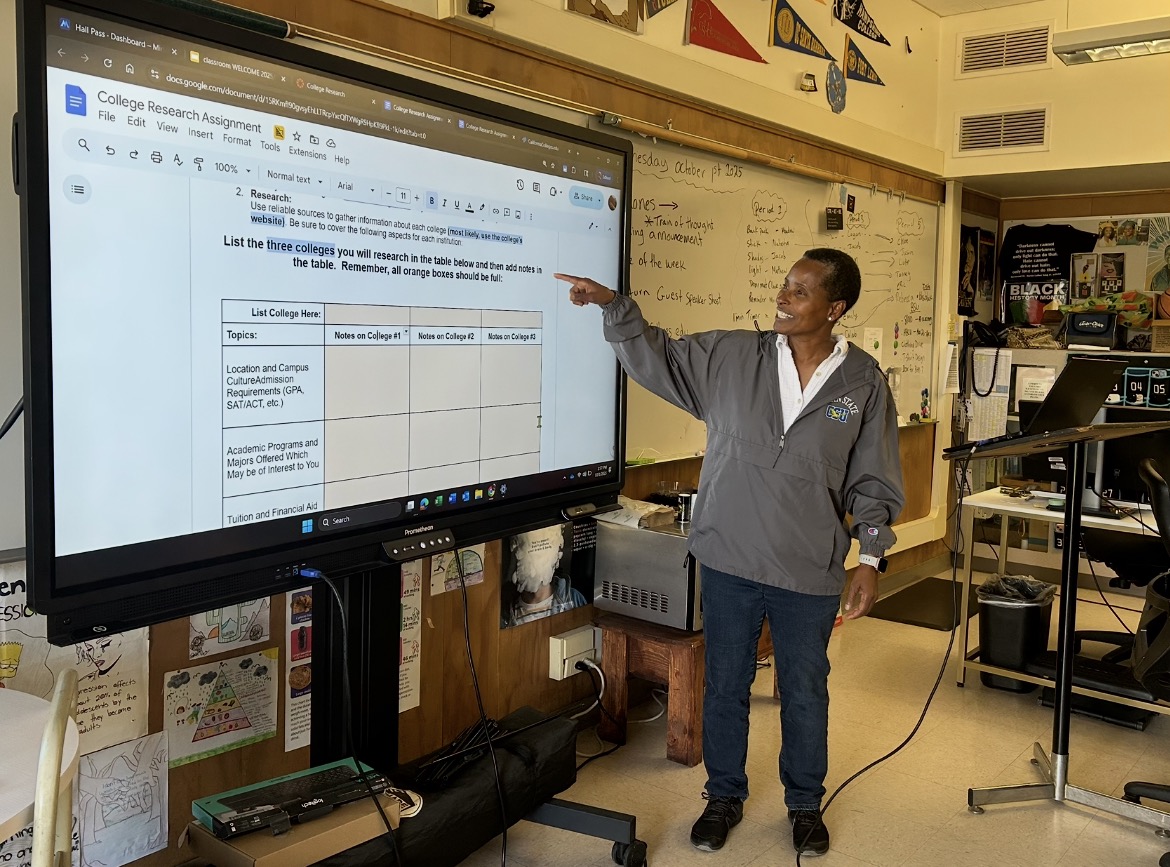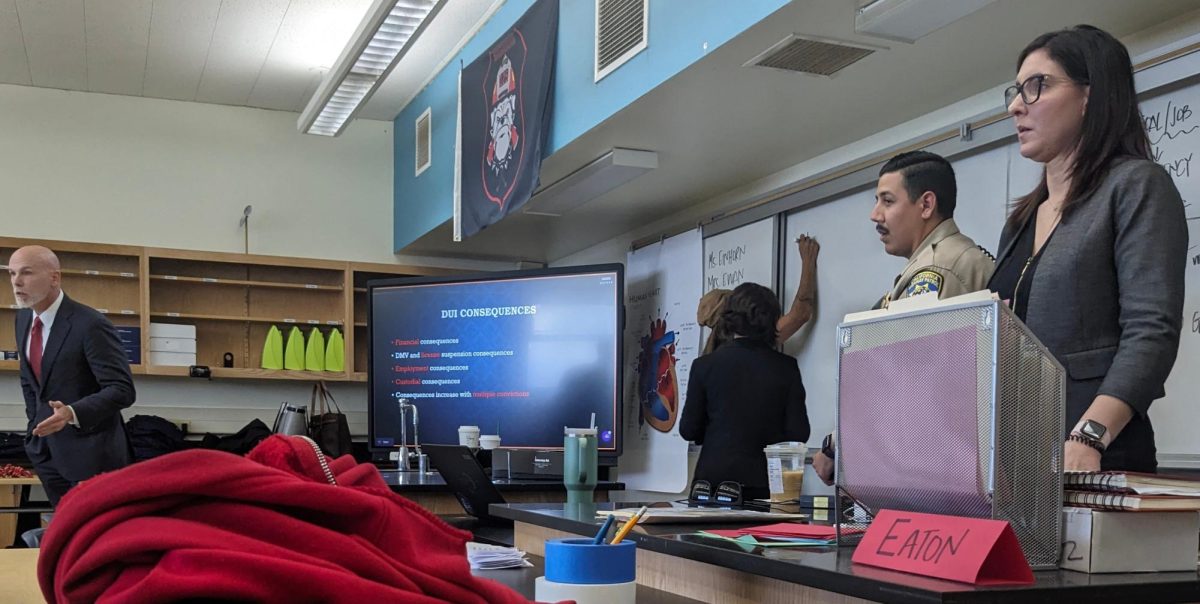The District Attorney Office collaborated with Buena’s First Responder class to showcase DUI, the crime committed by driving under the influence, training to students and faculty, March 12 in room 125.
During 6th period, CTE instructor Merrit Eaton traded a routine class period for a presentation, teaching aspiring first responders all there is to know about DUIs and what consequences come with receiving one.
The class serves as an exposure course to the basics of a first responder’s responsibilities from firefighter to EMTs and everywhere in between. An important basic for students looking to pursue a career is the application process, however if someone had a DUI on their record, they will be disqualified.
CHP Officer Alfaro, Defense Attorney Jarrod Wilfert, District Attorneys Kelsey Einhorn and Jillian Ewan partnered with Eaton to show her students all there is to know about DUIs and what comes with receiving one.
Einhorn and Ewan led the presentation portion, beginning with the five ways to define the term ‘under the influence’, sobriety tests, and how to identify signs and symptoms of an intoxicated individual.
Alfaro followed with personal experiences from the job in order to demonstrate how these tests and symptoms play out in real time. He also introduced the activity of the event: students passing a few sobriety tests while wearing Fatal Vision impairment goggles, goggles that impair the user’s vision like intoxication would.
In pairs, students came up to the middle of the room, put on the goggles and wobbled their way through these tests that an officer would instruct an individual to demonstrate in order to collect data on physical symptoms.
The safety aspect of this activity applies to both ends of the test; the students visually understand what it looks like for an intoxicant to fail it and how it feels to perform for it. It’s nearly impossible for an intoxicated individual to follow all instructions provided by these tests.
Not only do they look at physical symptoms, but drug recognition experts run exams and vitals, as well as medical records, for a thorough determination and search for any alcohol levels. They also check if the symptoms may not be due to intoxication.
Wilfert took over to present the aftermath of receiving a DUI, including the many consequences and restrictions one faces. Not only is it a hardship for a person and their families to receive a DUI, or worse, but it’s not easy for the authorities either.
Wilfert shared his own experiences on the job while digging into the trauma an officer can develop from the worse case scenarios. He used his experience alongside theoreticals to show students the risks of making that decision of becoming intoxicated and going behind the wheel.










































































